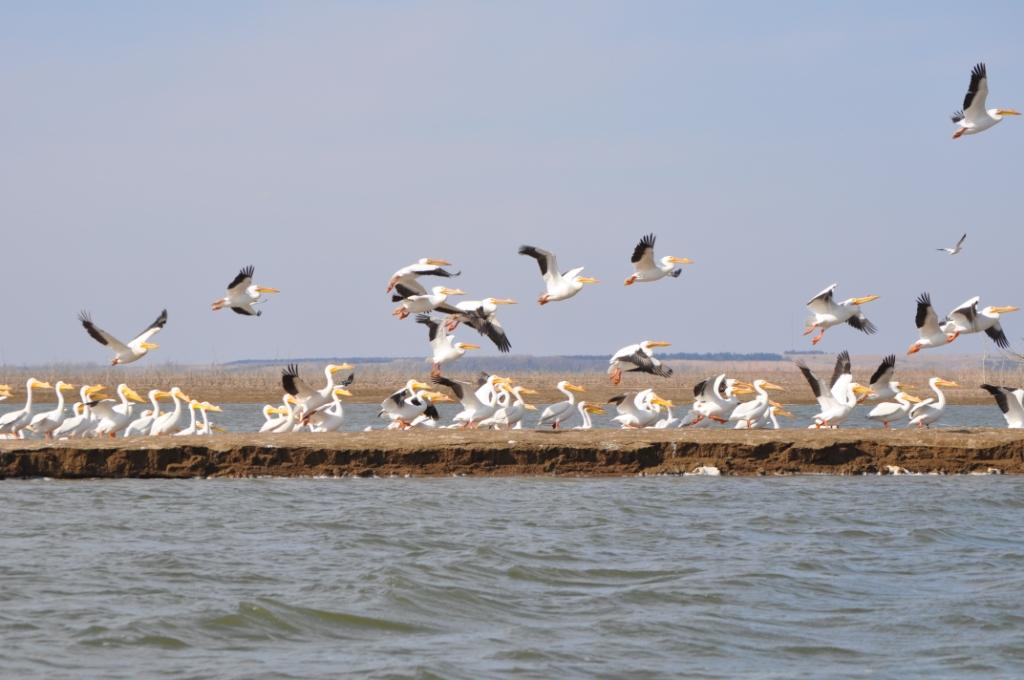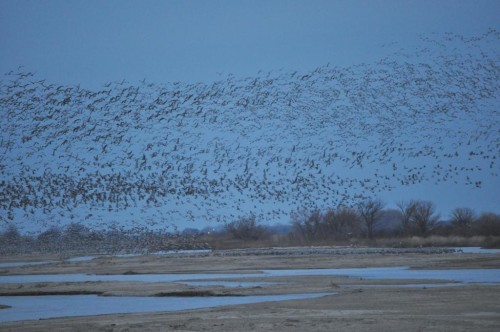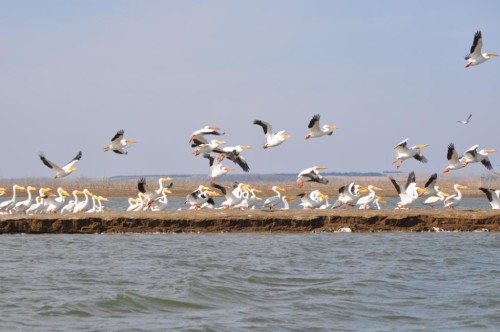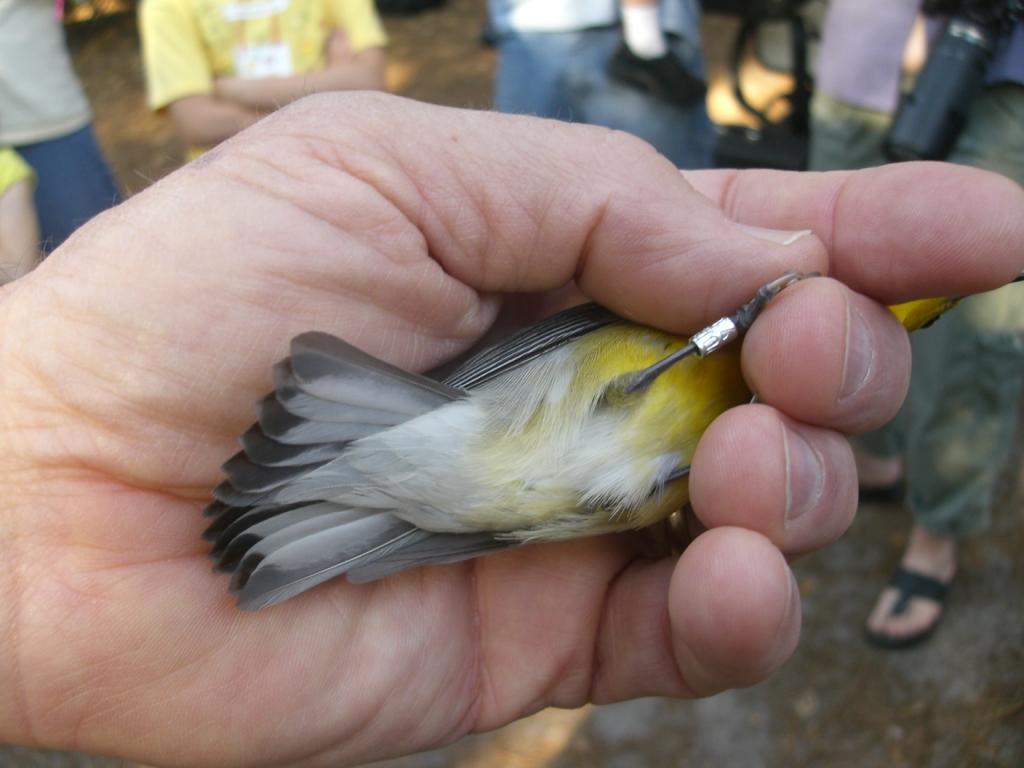Admit it: You think of Nebraska as a flyover state. Or a drive-through.
What if I told you that it was also home to one of the world’s greatest wildlife spectacles? No, forget about me. What if Jane Goodall told you that? Because amid the feedlots and the corn fields and the endless expanse of sky, something magical takes place here every spring as this midwestern fly-over state becomes — quite literally — a flyover spectacle, not for humans, but for more than seven million migrating birds including nearly half a million cranes and the American white pelican. This is one of the prime birding spots in North America, and Jane Goodall does indeed reserve a spot in her calendar to watch the annual migration.
In Your Bucket Because…
- You’ve have to go to Africa or Alaska to see another migration of this magnitude.
- With 400 species and millions of migrating birds, this is a life-list destination for birders.
- Good for: Nature lovers, birdwatchers, nature photographers, and families with kids interested in nature. Also for people road tripping across the country.
Nebraska Bird Trails and the Platte River
The undisputed highlight of Nebraska birding is the annual spring crane migration, which takes place from mid February through mid April, with the height of the migration in mid-to-late larch. The crane migration brings tens of thousands of visitors annually to Nebraska. Centered around Kearney and Grand Island in the south-central part of the state along the Platte River, the migration is as impressive as advertised… but it’s only the tip of the iceberg.
Nebraska has a network of birding trails, and dedicated birders can, with luck and time, check off not only the famed cranes, but migratory shorebirds and waterfowl, as well as woodland species and maybe even — if they are extremely lucky and sharp-eyed — a whooping crane. Made up of nine intersecting highway routes, the Nebraska Birding Trail passes through the state’s distinct 10 eco-regions. No it’s not all corn fields.. Of the five routes that follow the state’s ‘major river systems (the Missouri, the Platte, the Republican, the Elkhorn and the Niobrara valleys), the Platte River along with the nearby Rainwater Basin offers the most spectacular spring spectacle. Dozens of national wildlife refuges, wildlife management areas, wildlife centers, and state parks offer bird-watching opportunities within an hour of Kearney and Grand Island. It’s impossible to visit them all, and of course, what you’ll see depends on the time of year.The waterfowl pass through by mid-March, which is the height of crane season. The cranes stick around till mid April. So if you want the whole spectacle mid-March is probably best.
White Pelicans: The Harbingers of Spring
In March, central Nebraska shows no sign of spring. Trees are bare, temperatures can still dip to single digits. Invisible though it may be, nature is nonetheless on the move.
I’ve just spend the morning seeing evidence that at least one group of travelers thinks it’s spring: I’ve been huddled for two hours in a bird blind in Alma, near Kearney, watching the sandhill cranes awaken and take to the skies. Now, bundled in down and fleece and wool and Goretex, I am headed an hour or so south to Harlan County Reservoir, one of the largest bodies of water on the North American Central Flyway. The reservoir is a stop over point for millions of migrating birds, including bald and golden eagles, American white pelicans, osprey, several species of ducks and geese. About 300 species of birds have been tallied here, including the rare whooping crane. I’m liking my odds of finding a few new species, as well as seeing some old favorites.
I get lucky almost at once: Just after climbing into one of the boats that takes visitors on a free birding-boat tour of the reservoir in late March and early April, I see a bald eagle posing obligingly, high in a leafless winter tree. But it’s the American white pelican that has brought me here.
The white pelican is one of North America’s largest birds, weighing between 10 and 20 pounds and with a wingspan that can reach 9 1/2 feet and an enormous beak that can hold up to three gallons of water. The pelicans here are snowy white, not brown like their southern cousins, with black stripes under their wings and bright yellow-orange beaks and feet. Gregarious, they cluster together on islands in the middle of the lake, and during the day, test the winds in an activity called kettling, during which they soar and spiral like an avian precision team.
We find the pelicans hanging out in clusters on several of the small flat islands that dot the reservoir. They feed here for a few weeks before heading north. Today, there is no sign of spring. The winds are whopping across the lake, the temperature is in the teens, and air has that cold crisp bite that tells you winter is not quite ready to relinquish her hold. But the pelicans, headed north to their summer feeding grounds in the North Central US and in Canada, disagree: They, and the cranes, and the seven million other birds that fly through here every year, are the harbingers of warmer days to come.
Practicalities
- The white pelican watch runs from early March through late April; related events (from musical concerts to “polar plunges”) are held in the area. Contact HarlanCountyTourism@yahoo.com for information, as well as for dates the FREE birdwatching boat tours will be offered (usually twice daily the during the last week of March).
- Weather during March can be variable, to put it mildly. Temperatures, especially before dawn and after dusk, can drop into the teens or single digits, snow can still be on the ground, and winds can be cutting. For crane watching you’ll be in the blinds; on the boat tour, you’ll be on open water. In either case, it’s a cold couple of hours. Wear lots of layers, hats scarves and gloves, thick socks, and take chemically activated toe and hand warmers.
- You’ll want your best telephoto lens. Flash is prohibited, so if you’re serious, bring a tripod.
- After bird-watching, you can have lunch (and warm up) at Navigator’s Restaurant at Harlan County Reservoir, where you can enjoy a selection of seafood plus Nebraska steaks and family favorites.





